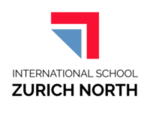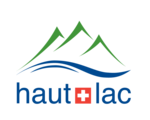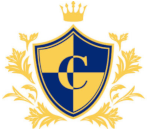However, the structure of the Swiss education system is roughly the same in all cantons and includes three levels as detailed below.
Pre-school
Pre-school education is not compulsory in all the cantons but most of the children (98.5%) attend a Kindergarten (école enfantine/ jardin d'enfant/ Scuola dell'infanzia) for two years before starting primary school. Usually, students are enrolled in pre-school at four years old.
In some cantons such as Zurich and Geneva, the last year of Kindergarten is compulsory. Access to public education in Switzerland is free of charge and is funded through government taxes.
In pre-school, children do art, crafts, music, dancing, educational games, perception activities, listening skills and - during the last year - the basics of writing, reading and mathematics. Swiss pre-schools are known for their creative way to teach to children.
School hours are quite strange, and many working parents find them inconvenient. Students have two and a half hours of lectures in the morning. They may also have two hours of lecture the morning and then two more hours in the afternoon. During lunch, most kindergartens are closed, forcing children to go back home to eat. This can be a problem for working parents who need to come home to take care of their children.
For children, pre-school education is their first experience in a group away from their parents and a good way to integrate in the local community. Research has shown that children who do not attend Kindergarten may have serious educational disadvantages in comparison to children who did attend Kindergarten
Primary school
Primary school (Primarschule, école primaire/ scuola primaria o elementare ) is compulsory for all Swiss children starting at the age of six. Depending on the canton, primary school can last between four and six years. The average length of primary school is usually five years.
Primary schools are coeducational but schools usually only teach in one language (German, French or Italian). Children usually go to a school which teaches in the language they speak at home. All subjects are taught by one teacher.
You can send your child to a public primary school or to a private school. Public primary schools do not charge tuition. However, you may have to pay for school supplies, gym clothes, books and school field trips.
Secondary school
After primary school, students are separated according to the type of careers they want. They can choose between an academically- or a vocationally-oriented school. Academically-oriented students enter high school (Gymnasium or Kantonsschule), and take a Matura (high school diploma) examination at the end. The Matura is necessary for university entrance. Vocational courses lead to a vocational diploma.
High schools are divided between lower secondary and upper secondary. In lower secondary, children study different subjects: their national language (German, French, Italian or Romansh), two foreign languages (generally English and German, French or Italian), mathematics, natural sciences, geography, history and civic education, economics, arts, music and sport. Children also receive career guidance and vocational preparation.
At the end of lower secondary, children begin to choose what they want to study (either academically or for a career). Once a child finishes lower secondary school, education is no longer compulsory.
During upper secondary school, students who follow an academic curriculum will have the choice between several specialized Matura schools. Six different school types are available: Math and Science (Matematisches und Naturwissenschaftliches Gymnasium), Modern languages (Neusprachliches Gymnasium), Classical languages (Altsprachliches Gymnasium), Secondary School of Economics (Wirtschaftsgymnasium) , Secondary Music and Art school (Musisches Gymnasium) and Secondary School of Sports (Sportgymnasium).
At 18 or 19 years old, students can take the Matura exam. If they receive a Matura diploma, they are eligible for university.
Students can also enter a vocational school (Berufslehre) for their upper secondary education. To enter a vocational school, they usually have to pass en entry exam. At the end of vocational school, students often continue their studies at a Fachhochschule (technical schools) or a Höhere Fachschule (vocational school).
Enrolment in Swiss schools
Every child between 6 and 15 years old registered in Switzerland has to be enrolled in a primary or secondary school. You will have the choice between a variety of schools, especially if you live in a big city. To enrol your child, most cantons require the following documents:
- Birth certificate or livret de famille
- A proof of health and accidents insurance
- A residence permit
Different cantons have different enrolment procedures, so be sure to check with your canton's department of education on how to enrol your child.




